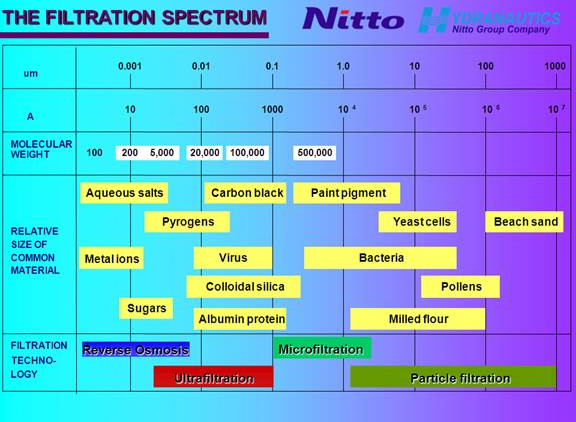Ultrafiltration membrane filtration (UF) is a low pressure membrane process for water treatment that is designed to remove turbidity causing particles including those comprised of suspended solids, bacteria, colloidal matter and proteins.
The main separation mechanism of UF membrane filtration is size exclusion or sieving and the graphic illustrates that UF effectively removes particles in the size range of less than 0.01 to 0.1 mm. Effective removal of these contaminants in a source water results in a filtrate well suited for further treatment by downstream reverse osmosis (RO).
The UF process is used in a wide variety of applications and industries and typical feed sources include seawater, surface, well and waste waters.
AMTA is the only industry organization that focuses specifically on membrane processes including reverse osmosis (RO), nanofiltration (NF), microfiltration (MF), ultrafiltration (UF), electrodialysis reversal desalination (EDR), and membrane bioreactors (MBR). The AMTA website offers a wide range of proprietary Fact Sheets and a complete Digital Library of presentations, posters, and papers on all topics related to membrane treatment, membrane systems, and regulatory and compliance topics.
Learn More About AMTA
- Membrane Technology Fact Sheets
- Chats with the Pioneers of Membrane Technology
- AMTA Workshops, Conferences, and Training Event Calendar
- AMTA Digital Library
- The Benefits of AMTA Membership

Ultrafiltration Membrane Particle_Sizes